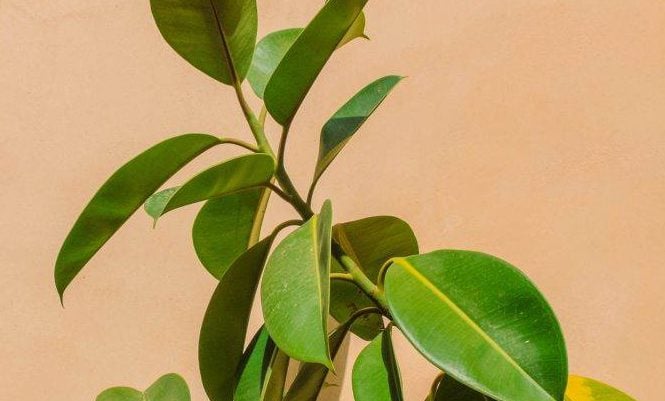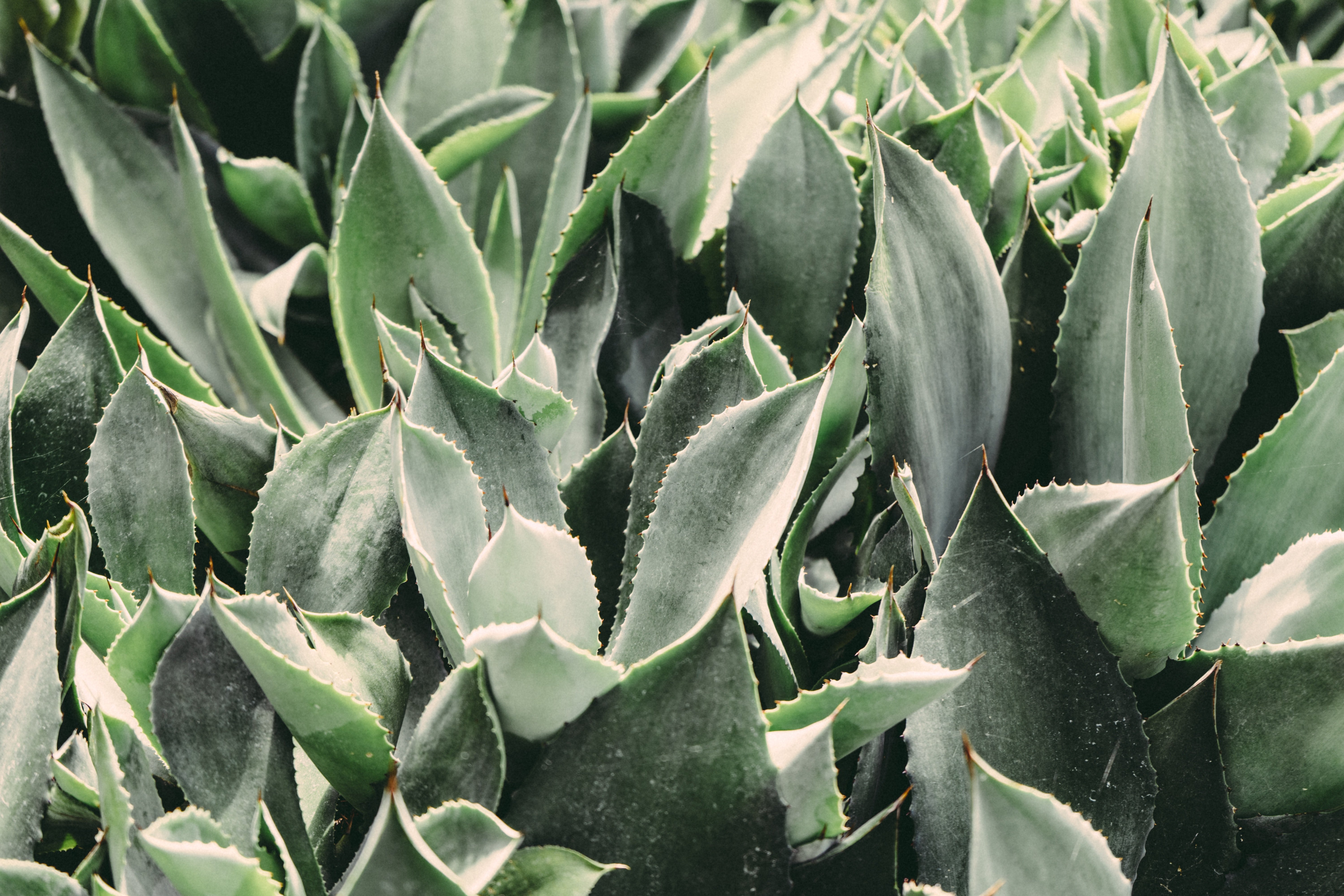Last updated on October 23rd, 2023 at 08:44 pm
Every (indoor) plant needs water, sometimes more sometimes less, it all depends on the species. But also the natural habits such as current conditions of the plant and its environment play a role. If you are one of those who perhaps can not always spend so much time for watering, then it would be desirable, of course, if you have plants with low water needs in your home. Therefore, we want to show you five special houseplants that need little water in this article.
Contents
- 1 Why do some plants need less water?
- 2 1. recommendation: rubber tree
- 3 Gum Tree Care
- 4 2nd recommendation: Agave
- 5 Agave Care
- 6 3.recommendation: Tillandsias
- 7 Tillandsia Care
- 8 4.recommendation: cobbler palm
- 9 Cobbler Palm Care
- 10 5.Recommendation: Wonder shrub
- 11 Wonder Shrub Care
- 12 More tips for the care of houseplants
- 13 Author
Why do some plants need less water?
There are now also quite a few houseplants that require little water that you can keep in your home. If their natural home is the Mediterranean, for example, the plants are naturally accustomed to cope with less water. They have the advantage over other plants that they can easily survive longer dry periods and do not die. The plants thrive thanks to their drought resistance and low water and nutrient requirements.
1. recommendation: rubber tree
It is the classic among the houseplants that need little water in your home par excellence. Robustness and ease of care is its hallmark. With its distinctive oval-round leaves, it scores points in any case and fits by the simple appearance in any living room. The distinctive dark green large leaves can grow up to 40 cm long. The underside of the leaves can also shine in a reddish tone.

Gum Tree Care
A bright location without direct sunlight is best for your rubber tree, in fact, this plant does not need much more. When watering, the immersion method is preferable to normal watering with a watering can. To do this, simply immerse the entire root ball in room temperature water for 30-60 minutes. You should only repeat this process when the top layer of soil has dried. If you want to know more information about the rubber tree and its care, then you can go to our article “Rubber tree care and propagation”. There are many more tips and tricks that we have dedicated to this classic plant.
2nd recommendation: Agave
Our second recommendation for houseplants that need little water is the agave. The name agave is derived from the Greek word agavos, which means noble or magnificent. And this is exactly what the agave plant scores with. With its long thick leaves, it looks a bit like a plant from earlier times. The orange-red flower of the agave is unfortunately quite rare. Only every 10-15 years the plant blooms. Then the stem of the flower grows high up at the end of which the individual small petals grow.

Agave Care
When caring for the agave plant, you can’t really make any mistakes. Since the plant belongs to the succulents, it needs very little water. Succulents are water-storing plants that can store water in their leaves, trunk or roots for a long period of time. Therefore, the agave also prefers rather dry soil. Watering every one to two weeks is sufficient. Feel free to put the plant in a place with a lot of sun, such as a small spot by the south window.
3.recommendation: Tillandsias
Tillandsias (air plants) are the true artists of the air. They absorb their nutrients through the air alone and do not need potting soil to be planted in. In their natural habitats, tillandsias live on other plants or even on rocky outcrops. These extraordinary plants filter moisture and minerals from the air with their tiny absorbent scales. If you are interested in more plants without soil, you can learn more about them in our article “Plants without soil”.
Tillandsia Care
Like many of the houseplants that need little water, tillandsias like a bright location. You should rather avoid direct sunlight. Once or twice a week you should water them with a spray bottle. The only question is: How do I set the stage for these special aerial artists in my home? The best way is to tie individual tillandsias to a piece of wood and hang them up with a string. This way you can decorate your kingdom from above as well!

4.recommendation: cobbler palm
The cobbler palm is one of the very undemanding houseplants that need little water. It is the classic plant for less light-flooded corners of your apartment. Since it cannot tolerate direct sunlight on its long thin green leaves, it is ideal for shady to semi-shady places such as a north-facing window. In winter, it can tolerate cool locations such as stairwells that have a temperature between ten and twelve degrees Celsius.
Cobbler Palm Care
Due to its lower water evaporation, it rarely needs watering. Just too much water is harmful to the cobbler palm. If the roots are too drenched with water, they will begin to rot. The soil should only be kept a little moist. You should also replant your plant about every three years so that its roots find enough space in the pot again.
5.Recommendation: Wonder shrub
If you want to have it a little more colorful in your apartment, then the wonder shrubs are just right for you. The leaves shining in beautiful autumn colors will brighten up any room. It’s a different way to brighten up your living room without flowering plants, because the foliage is more colorful than some flowers.
Wonder Shrub Care
Wonder shrubs are very frugal houseplants that require little water. They do thrive in a semi-shaded location. However, in order for them to show their magnificent colors, you should place them in a bright location, without direct sunlight. Since the wonder shrub is one of the houseplants that need little water, it naturally does not like waterlogging. You can simply go over the plant with a water sprayer every day, that is quite enough.
More tips for the care of houseplants
If you are unsure about caring for your houseplants, feel free to check out our article “The little 1×1 of houseplant care”. There we will show you some tips and tricks for proper care at your home, because every plant is unique. Therefore, it is important to take care of each of your favorites individually. The right care for houseplants is a prerequisite for healthy growth. After all, you want your houseplant to look its best. It is therefore all the more important to support them.


